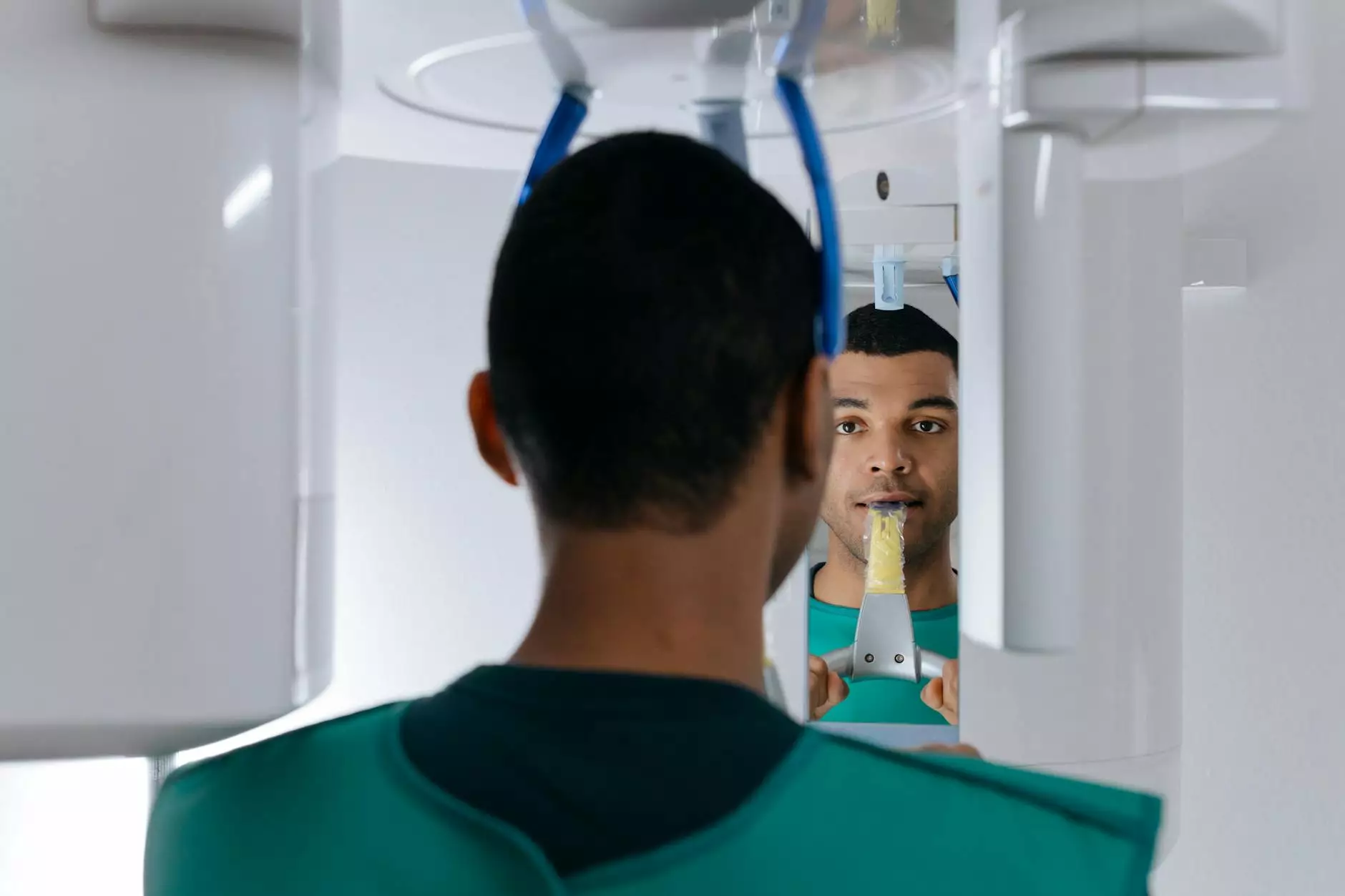Understanding the Stages of Adhesive Capsulitis: A Complete Guide for Patients and Healthcare Professionals

Introduction to Adhesive Capsulitis: The Frozen Shoulder Phenomenon
Adhesive capsulitis, commonly known as frozen shoulder, is a painful and disabling condition characterized by stiffness and loss of motion in the shoulder joint. It primarily affects middle-aged individuals but can occur at any age, impacting daily activities, quality of life, and overall well-being. Recognizing the stages of adhesive capsulitis is crucial for timely intervention and effective management, preventing the progression of the condition and promoting optimal recovery.
At its core, adhesive capsulitis involves inflammation, thickening, and contracture of the shoulder joint capsule. This process results in restricted mobility, pain, and reduced functionality. Understanding the natural progression through its distinct stages allows healthcare providers, including chiropractors, physical therapists, and medical doctors, to tailor treatment strategies accordingly.
The Pathophysiology and Causes of Adhesive Capsulitis
Adhesive capsulitis develops due to a complex interplay of inflammatory, fibrotic, and degenerative changes within the shoulder capsule. While the exact cause remains unclear in many cases, several risk factors contribute to its development:
- Idiopathic: No identifiable cause; often linked to spontaneous onset.
- Secondary factors: Shoulder injuries, surgery, immobilization, diabetes mellitus, thyroid disorders, autoimmune diseases, and prolonged inactivity create an environment conducive to capsule inflammation and fibrosis.
- Inflammatory response: Initial inflammatory cascade leads to capsule thickening, which progresses into fibrosis and contracture.
Current research indicates that the stages of adhesive capsulitis are reflective of these underlying pathological changes, emphasizing the importance of early diagnosis and intervention.
The Four Stages of Adhesive Capsulitis: An In-Depth Explanation
Understanding the stages of adhesive capsulitis helps clinicians and patients anticipate the clinical course and optimize the treatment plan. This condition typically progresses through four distinct phases:
1. The Freezing Stage (Painful Stage)
The initial phase often lasts from 6 weeks to 9 months. During this stage, patients experience intense shoulder pain, especially with movement or at night, which significantly limits mobility. The inflammation of the joint capsule is at its peak, leading to swelling, tenderness, and stiffness. Patients may notice a gradual decrease in pain at rest but heightened pain with motion, making everyday activities challenging.
- Symptoms include: persistent shoulder pain, night pain, and initial decline in range of motion.
- Functional impact: Difficulty lifting objects, reaching overhead, or behind the back.
This stage often prompts individuals to seek medical attention due to persistent pain and functional impairment. Early diagnosis and management during this period can help slow disease progression.
2. The Frozen Stage (Stiffness Stage)
Typically lasting from 4 to 12 months, the freezing stage is characterized by a significant reduction in shoulder pain; however, the stiffness becomes more pronounced. The shoulder’s capsule becomes fibrotic and contracted, severely restricting movement in all directions. Patients often report that even light movements induce discomfort, and the overall mobility may decrease to almost no motion.
- Symptoms include: severe stiffness, limited active and passive range of motion.
- Functional impact: inability to perform daily tasks such as dressing, reaching for objects, or grooming.
Despite the decrease in pain, this stage can be frustrating for patients due to the persistent stiffness. Chiropractic interventions, physical therapy, and targeted exercises are often recommended to maintain joint health and mitigate further loss of motion.
3. The Thawing Stage (Recovery Stage)
Spanning from 12 to 24 months, the thawing phase marks the gradual regain of shoulder mobility. During this period, the fibrosis begins to resolve, and normal range of motion slowly returns. Pain continues to decrease, often allowing for improved functionality, but residual stiffness may persist.
- Symptoms include: decreasing pain, gradual improvement in movement.
- Functional impact: restore daily activities and resume normal tasks with less difficulty.
Active rehabilitation, stretching exercises, and sometimes intra-articular corticosteroid injections facilitate the recovery process. Patient compliance with therapy enhances outcomes during this stage.
4. The Resolution Stage
The final phase can last from several months up to two years after initial onset. The shoulder returns to near-normal or complete function. Any remaining stiffness or minor discomfort is usually manageable, and the joint regains its full range of motion.
This stage signifies effective healing and resolution of the inflammatory and fibrotic processes if proper treatment has been administered timely throughout the previous stages.
Diagnosis and Assessment of Adhesive Capsulitis
Accurate diagnosis during the early stages of adhesive capsulitis hinges on clinical assessment, medical history, and imaging techniques:
- Clinical Examination: Assesses active and passive range of motion, pain levels, and shoulder stiffness.
- Imaging: MRI or ultrasound to detect joint capsule thickening, synovitis, and rule out other shoulder pathologies.
- Special Tests: Certain physical tests can delineate the extent of mobility restriction and pain sources.
Early diagnosis is vital for implementing effective interventions to mitigate progression through the stages of adhesive capsulitis.
Comprehensive Treatment Strategies for Adhesive Capsulitis
Effective management of adhesive capsulitis involves a multidisciplinary approach tailored to the stage of the condition. Treatments are aimed at reducing pain, decreasing inflammation, restoring mobility, and preventing recurrence.
Conservative Approaches
- Physical Therapy: Customized stretching and strengthening exercises to improve joint flexibility.
- Chiropractic Care: Spinal adjustments and soft tissue therapy to enhance shoulder joint function and alleviate pain.
- Medications: NSAIDs for pain relief and inflammation reduction.
- Injections: Corticosteroid injections for quick inflammation control, especially during the freezing and early frozen stages.
Advanced and Surgical Options
- Manipulation Under Anesthesia: Breaking adhesions manually to restore movement, suitable in stiff, resistant cases.
- Arthroscopic Capsular Release: Minimally invasive surgery to release the contracted capsule, often reserved for refractory cases.
Early interventions tend to yield better long-term outcomes. Regular follow-up and patient education are essential elements of successful treatment plans.
Role of Lifestyle and Preventative Measures in Managing Adhesive Capsulitis
Lifestyle modifications can significantly influence the disease course. Patients are encouraged to:
- Engage in regular shoulder mobility exercises, especially during the early stages.
- Maintain proper posture and ergonomics to reduce strain.
- Manage underlying health conditions such as diabetes or thyroid issues effectively.
- Avoid prolonged immobilization after shoulder injuries or surgeries.
Healthcare professionals, including chiropractors and medical practitioners, can guide patients in adopting these habits to prevent the development or exacerbation of adhesive capsulitis.
Innovative Therapies and Future Directions in Treatment
Emerging therapies such as platelet-rich plasma (PRP) injections, stem cell therapy, and targeted physiotherapy protocols are promising areas of research that aim to accelerate healing and reduce the duration of the disease. Advances in understanding the stages of adhesive capsulitis continue to enhance personalized treatment approaches, improving patient outcomes worldwide.
Conclusion: The Importance of Early Intervention and Comprehensive Care
In conclusion, a thorough understanding of the stages of adhesive capsulitis is essential for patients, health professionals, and specialists like chiropractors and physiotherapists to develop targeted strategies for management. Recognizing symptoms early and implementing stage-specific interventions can significantly diminish pain, restore shoulder function, and improve quality of life. Continued research, patient education, and multidisciplinary collaboration are key to advancing treatment outcomes and eventually finding a cure for this challenging condition.
For further resources and professional guidance, visit iaom-us.com.









